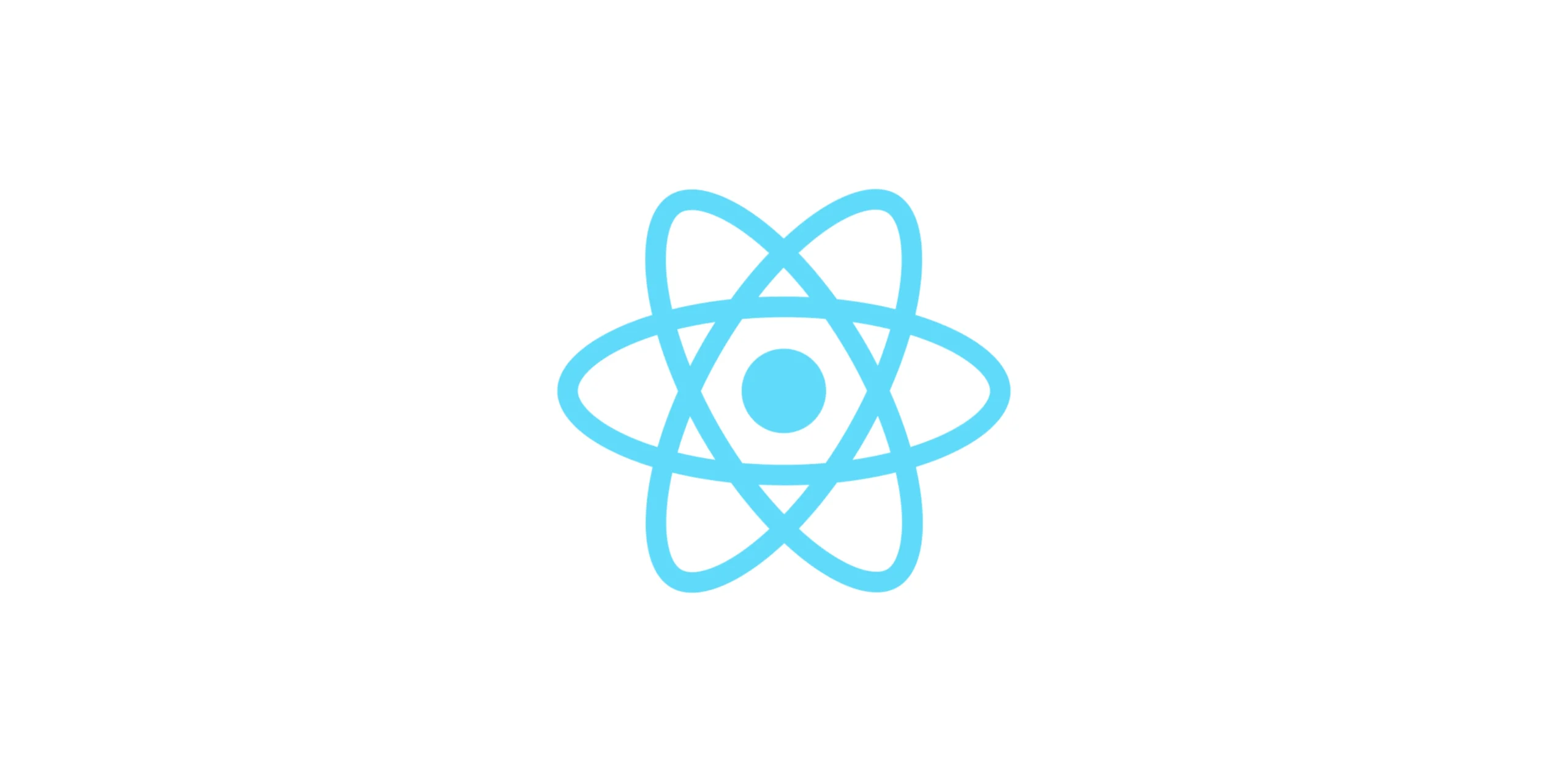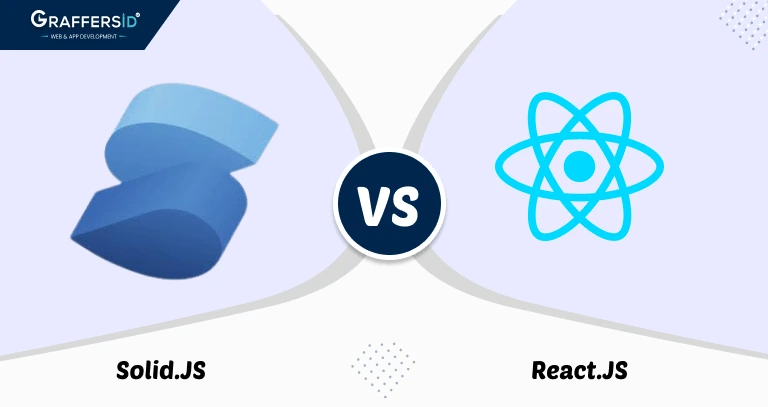In today’s fast-paced world of web development, choosing the right JavaScript framework can make all the difference in the success of your project. With so many options available, it can be overwhelming to decide which one is the best fit for your needs. Two popular frameworks, SolidJS vs. React, are constantly compared and debated in the web development community.
In this comprehensive guide, we will take a closer look at both frameworks, their key features, pros, and cons to help you make an informed decision on which one is best for your project. Whether you’re a seasoned web developer or just starting, this guide will provide you with the insights you need to choose the right framework for your next project.
What is SolidJS?

SolidJS is a modern frontend library that focuses on performance and scalability. It is designed to help developers create fast, efficient, and reusable web applications. SolidJS provides a comprehensive set of components that can be used to build complex web applications quickly and easily. It offers a lightweight and fast alternative to popular UI libraries such as React, Vue, and Angular. Solid.js provides a minimal set of abstractions and utilities for building web applications, allowing developers to focus on writing the logic of their applications rather than being bogged down by complex configurations and boilerplate code.
Key Features of SolidJS

- Fine-Grained Reactivity: SolidJS uses a signals and computation-based reactive system. It tracks dependencies and simply changes the impacted DOM elements rather than re-rendering entire components.
- No Virtual DOM: It is not dependent on a virtual DOM. It uses less memory and renders content more quickly by directly updating the DOM.
- JSX Support: It is simple for developers who are accustomed to React to use because it uses JSX in a similar way. During build time, JSX is compiled into effective reactive JavaScript code.
- Compilation-Based Approach: It creates highly efficient JavaScript code by compiling components. As a result, there is little performance loss and no runtime overhead.
- Minimal Bundle Size: It has a relatively small footprint due to its lightweight design and compilation approach. Perfect for applications where every kilobyte counts and performance is important.
- High Performance: It is among the quickest UI libraries due to its reactivity architecture and direct DOM changes.

Use Cases of SolidJS
-
Small to medium-sized applications: SolidJS is perfect for tasks requiring high speed and no overhead.
-
Real-time applications: Chat apps and dashboards can be effectively handled by SolidJS due to its fine-grained reactivity.
-
Performance-critical applications: SolidJS performs extremely well in situations where memory usage and rendering speed are important.
What is React?

React.js is a JavaScript library used to create user interfaces. It is used by many companies and developers to build complex web and mobile applications. React.js allows developers to create components that can be reused in different parts of the application, making it easier to maintain the codebase and reduce development time.
React.js also supports server-side rendering, which means that the same component can be rendered on both the client side and server side, thus improving performance and SEO optimization. React.js also has a powerful set of tools for debugging applications, making it easier for developers to quickly fix issues in their codebase.
In comparison with other popular JavaScript libraries such as AngularJS or VueJS, React.js offers more flexibility when it comes to creating components and offers better performance when dealing with large datasets or complex user interfaces.
Key Features of React

- Virtual DOM: React only updates the changed portions of the DOM by creating a virtual representation. This enhances expected performance by reducing direct DOM operations.
- Component-Based Architecture: Applications are divided into modular and reusable components. Promotes maintainable and modular code.
- Hooks API: Hooks (such as useState and useEffect) allow the use of lifecycle and state methods in functional components.
- One-Way Data Binding: Ensures greater control and predictability by allowing data to travel only in one direction, from parent to child.
- Rich Ecosystem: A wide range of libraries for form handling, state management (Redux, Recoil), and routing (React Router).
- Cross-Platform Capability: React Native allows the development of native mobile applications by using the same component model.
- Backed by Meta (Facebook): Constant maintenance and enhancements are supported by one of the largest tech firms.

Use Cases of React
-
Large-scale applications: Complex, large-scale apps that need a lot of third-party integrations are more suitable for React.
-
Enterprise applications: React is a great option for enterprise-level apps that require scalability and long-term support due to its developed ecosystem and infrastructure.
-
Interactive UIs: React is excellent for creating dynamic, interactive user interfaces due to its declarative syntax and rich ecosystem.
Read More: Difference Between ReactJS and React Native
Comparison Of SolidJS vs. React
1. Performance Comparison
In terms of performance, SolidJS generally has an advantage over React due to its optimized virtual DOM implementation and selective re-rendering. However, React’s virtual DOM is well-established and offers a convenient API for managing updates to the DOM.
Rendering Mechanism
- SolidJS is often known for its performance in initial rendering. It uses a fine-grained reactivity system that allows it to minimize unnecessary re-renders, resulting in fast initial render times.
- React has made significant performance improvements over the years, and with the introduction of features like React Fiber (in React 16), it has also become quite fast in terms of initial rendering.
Speed and Efficiency
- SolidJS typically performs better than React in terms of raw performance across the majority of metrics. In applications with a high volume of UI updates, its smooth reactivity system ensures that it updates only what is required, improving performance and rendering times.
- React may be slower in some situations due to the overhead of the virtual DOM diffing process. React’s diffing process adds some overhead, particularly for large applications, even though it only updates the modified components of the virtual DOM tree when comparing it to the previous one.
Memory Usage
SolidJS exhibited better memory management compared to React, consuming fewer resources and leading to a more optimized user experience.
SolidJS Memory Usage (MB):
- Peak Memory: 50MB
- Average Memory: 30MB
React Memory Usage (MB):
- Peak Memory: 80MB
- Average Memory: 40MB
2. Learning Curve
- Developers can quickly become proficient with SolidJS without needing to understand intricate patterns or APIs. However, for beginners, the main challenge is understanding the complex process of fine-grained reactivity.
- React has a steeper learning curve as it introduces a broader range of concepts. Developers have to understand components, JSX, hooks, state management, the virtual DOM, and other things.
3. Developer Experience & Tools
- SolidJS’s simple approach offers an easier development experience. To better understand how the application functions internally, developers can examine reactive states, dependencies, and updates using the SolidJS DevTools plugin.
- React is widely known for its rich set of development tools. React DevTools offers a wide range of functionality, including the ability to investigate component hierarchies, view state and props, and troubleshoot performance issues.
4. Ecosystem and Community Support
- Even though SolidJS is growing, its ecosystem is still quite small in comparison to React. This indicates that there are fewer third-party frameworks, plugins, and libraries made especially for SolidJS.
- React has a larger and more mature ecosystem compared to SolidJS, including larger third-party libraries, tools, and resources. Some of the essential components of the React ecosystem include React Router, Redux, React Query, and Next.js for server-side rendering.
Comparison Table:
| Feature | SolidJS | React |
|---|---|---|
| Library Size | Small (less than 20KB) | Larger (100 KB) |
| Virtual DOM | No (fine-grained reactivity) | Yes |
| Performance | Faster | Slower |
| API | Simple API, less abstraction | Complex API, more abstraction |
| Learning Curve | Moderate | Beginner-friendly |
| Community | Smaller but growing | Larger community and extensive resources |
| Development Speed | Faster development | Slower development |
| Debugging | Can be difficult | Easier |
In the battle of SolidJS vs. React in 2025, both frameworks have their strengths and weaknesses. SolidJS is an ideal choice for smaller, performance-sensitive applications as it excels at minimalism, fine-grained reactivity, and raw performance. React continues to be the best option for large-scale, enterprise-level applications with complex user interfaces and ongoing maintenance requirements because of its robust tools, wide ecosystem, and broad acceptance.
Which One is More Popular: SolidJS vs. React?
React has an edge in terms of popularity because of its reliability and widespread adoption. For almost ten years, it has been the clear leader in the JavaScript ecosystem. It is supported by Meta (previously Facebook) and used by major tech companies such as Uber, Netflix, and Airbnb. SolidJS, on the other hand, while developing quickly, is still in its early adoption stage.
Read More: What is JavaScript And Why Is It So Popular?
Can SolidJS and React Be Used Together?
Yes, it is possible to use SolidJS and React together in the same project. However, there are some considerations to keep in mind:
- Isolation: It’s best to isolate SolidJS and React components to prevent conflicts. Each library should manage its part of the user interface to maintain stability and avoid unexpected behavior.
- Communication: To make both libraries work together smoothly, you may need to establish communication between SolidJS and React components. This can be achieved by passing data and events between them using a shared state management system like Redux or Mobx.
- Performance: Combining SolidJS and React should not significantly impact performance, as both libraries are designed to be efficient. However, thorough testing and optimization may be necessary for complex applications.
SolidJS vs. React: Which Framework is Best Suited for Your Project Needs?

The choice of the best framework for a web development project ultimately depends on the specific requirements of the project.
If you need a lightweight and simple framework that can be quickly learned and used for small projects, then JavaScript (JS) might be a good option.
On the other hand, if you require a more powerful and feature-rich framework for building complex, dynamic web applications, then React might be a better choice.
In summary, choosing the best framework for your project comes down to your project’s specific requirements and the skillset of your development team.
Conclusion
As the web development landscape continues to evolve, the choice between these two frameworks will largely depend on the specific needs and requirements of each project. While Solid.js may be a better option for simple projects that require quick implementation, React is better suited for complex, dynamic web applications with a large number of users.
With the continued advancements in technology, new frameworks will likely emerge, and the debate between SolidJS vs. React will continue. If you’re looking for a reliable and skilled team to help bring your web development project to life, our team of expert React developers is ready to help you bring your vision to reality.
Get in touch with us today to learn more about our app and web development services.
Hire remote React developers from us to bring your project to the next level!





